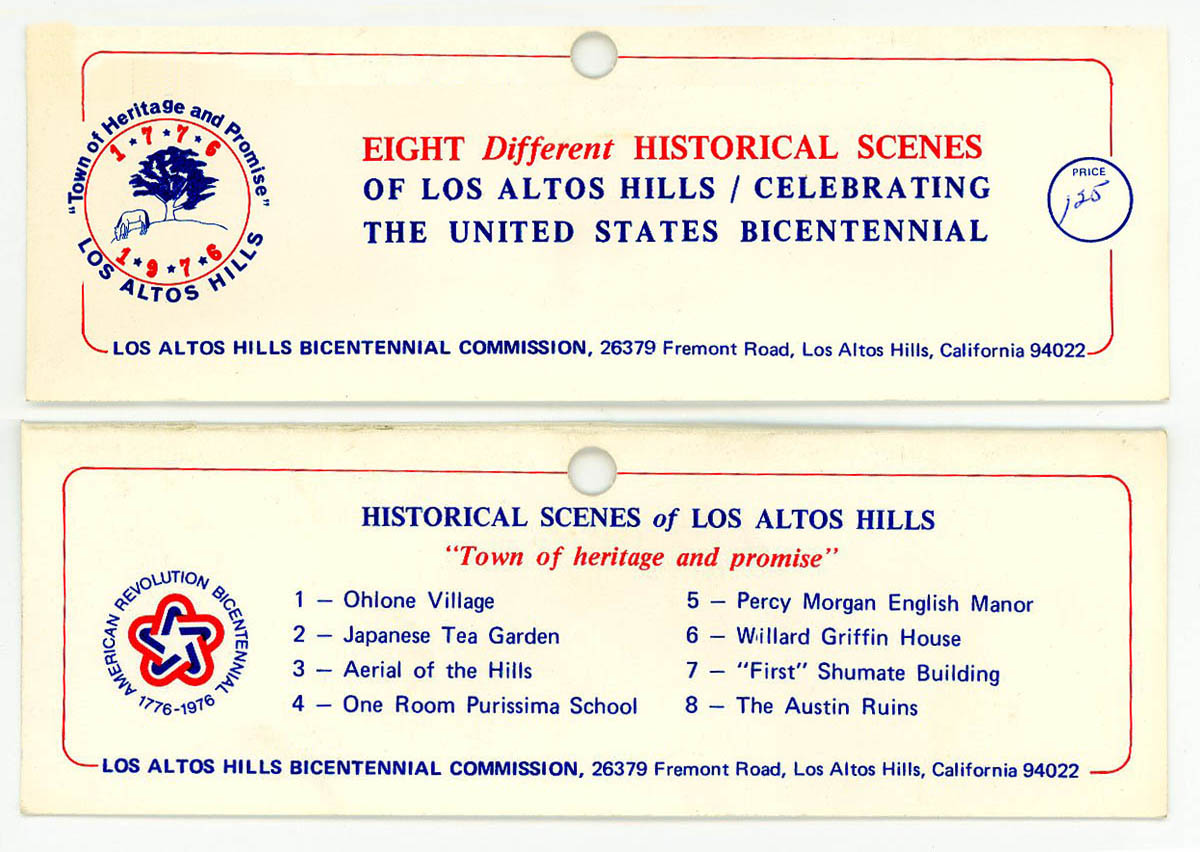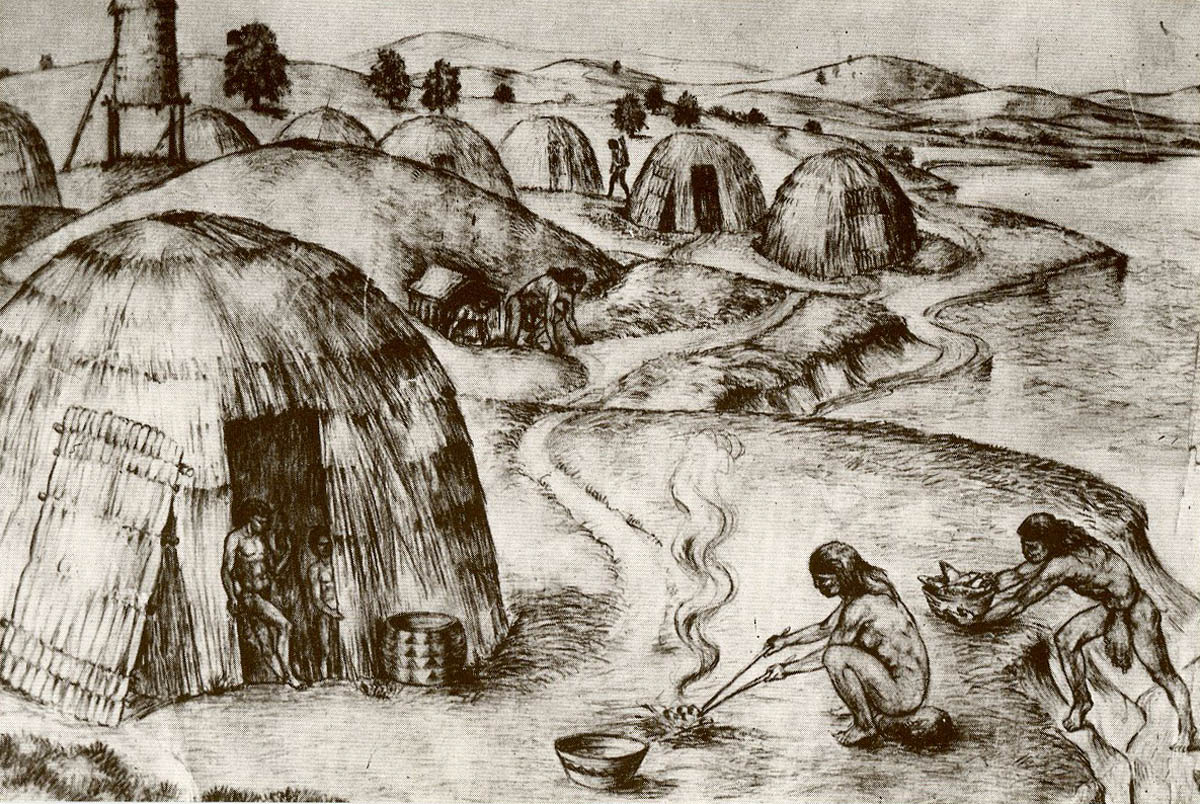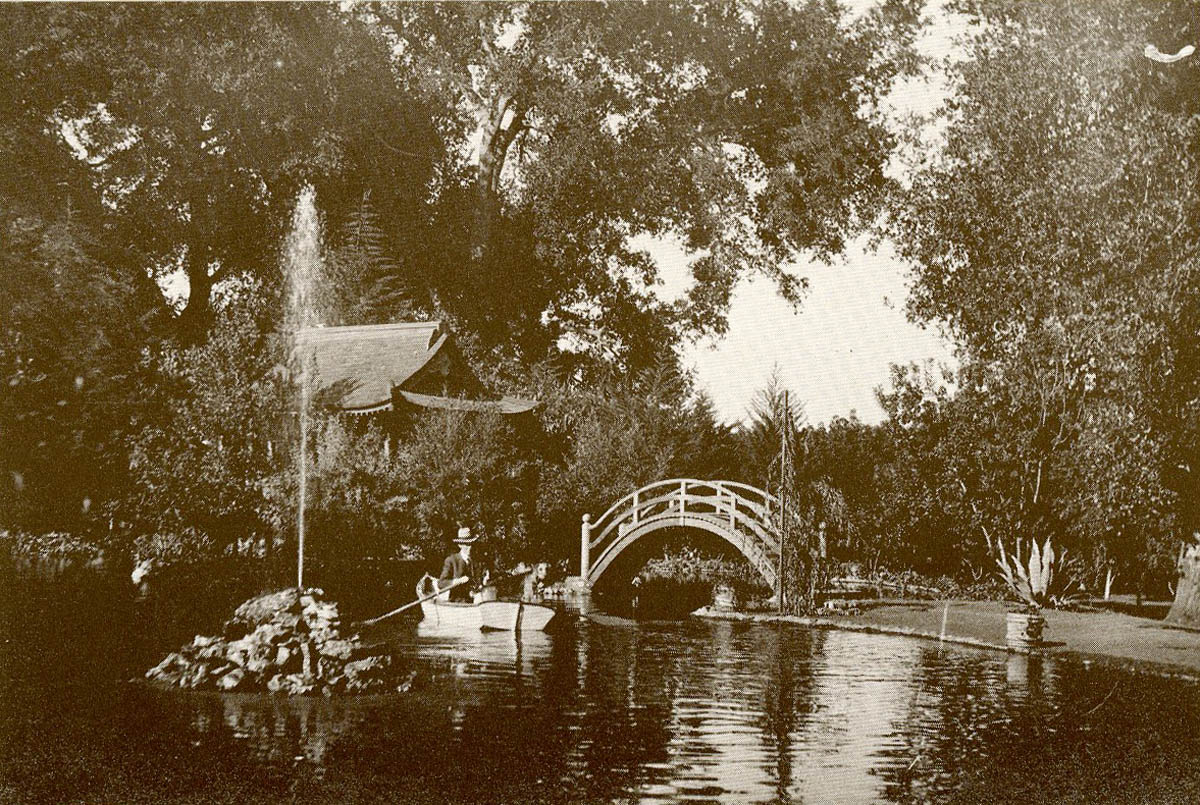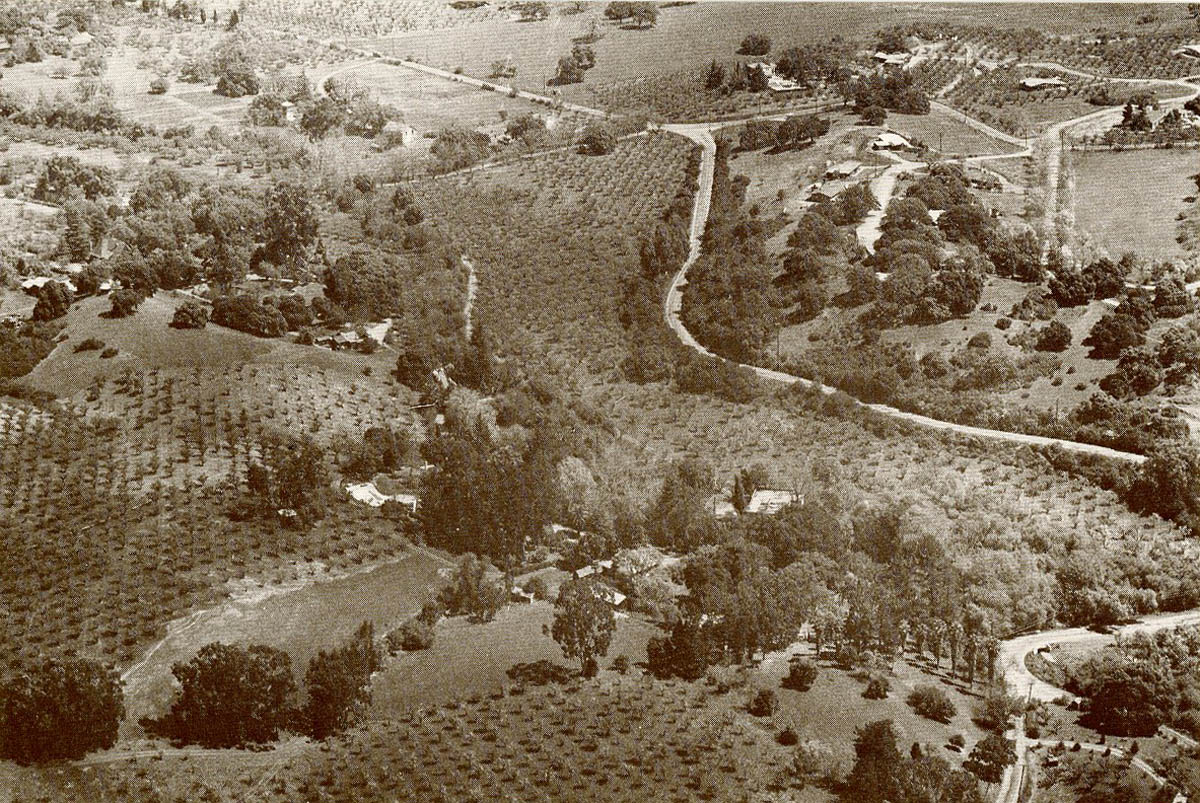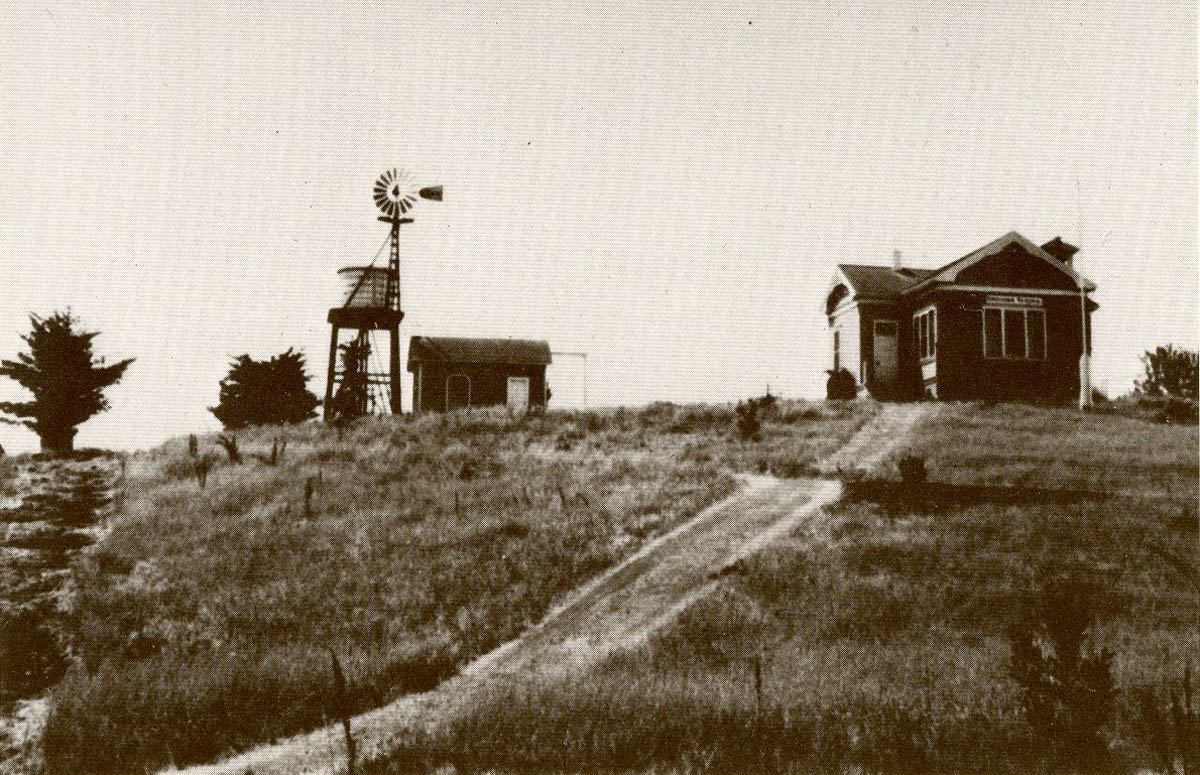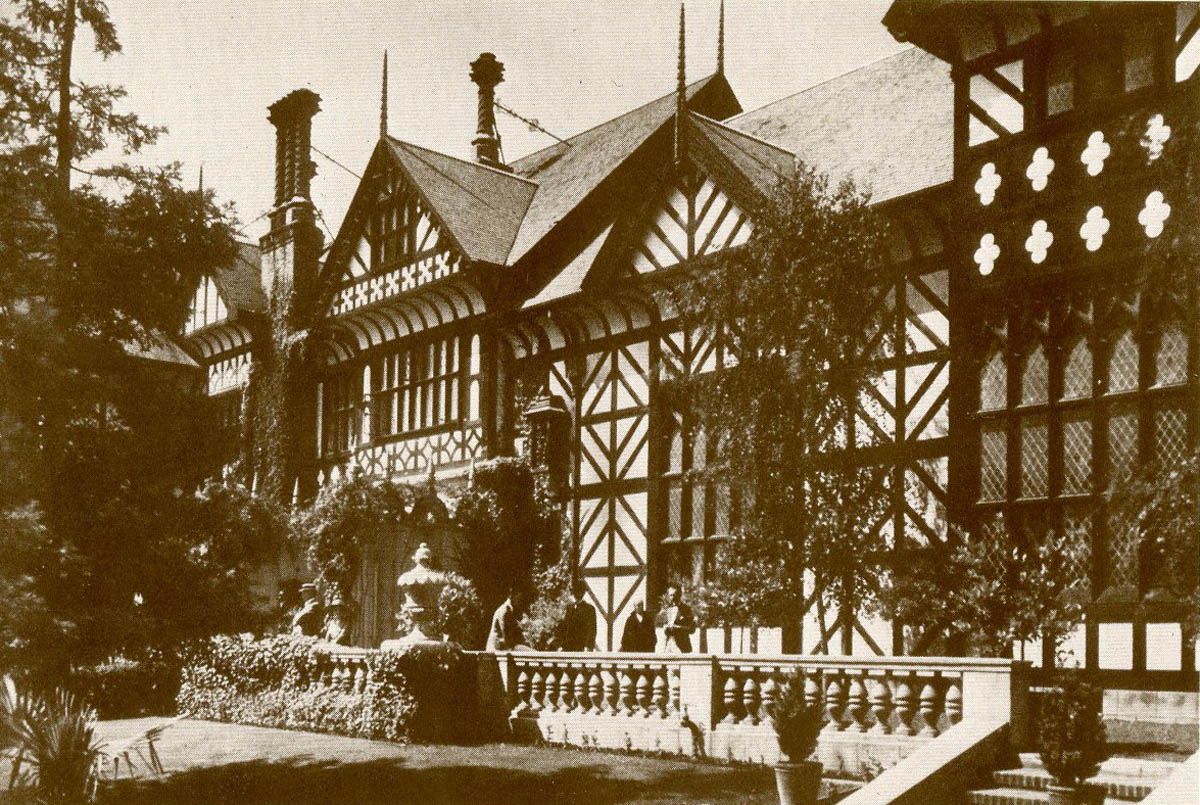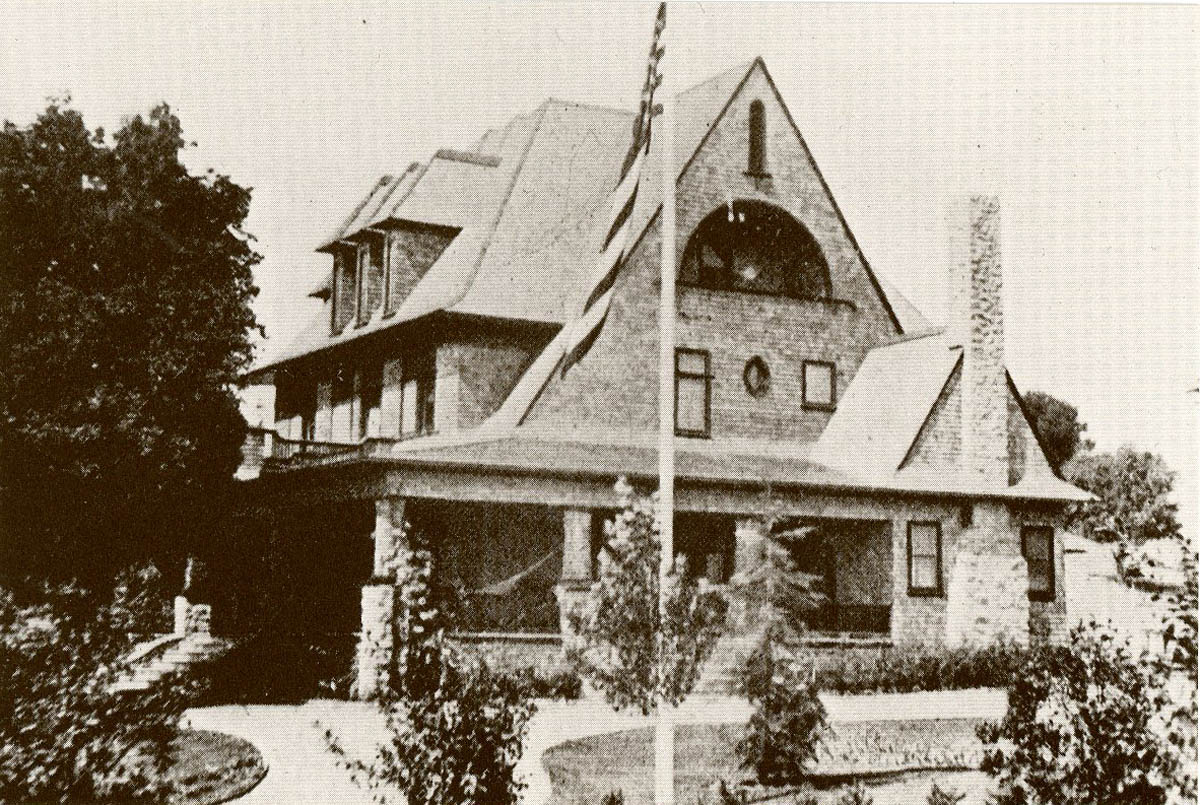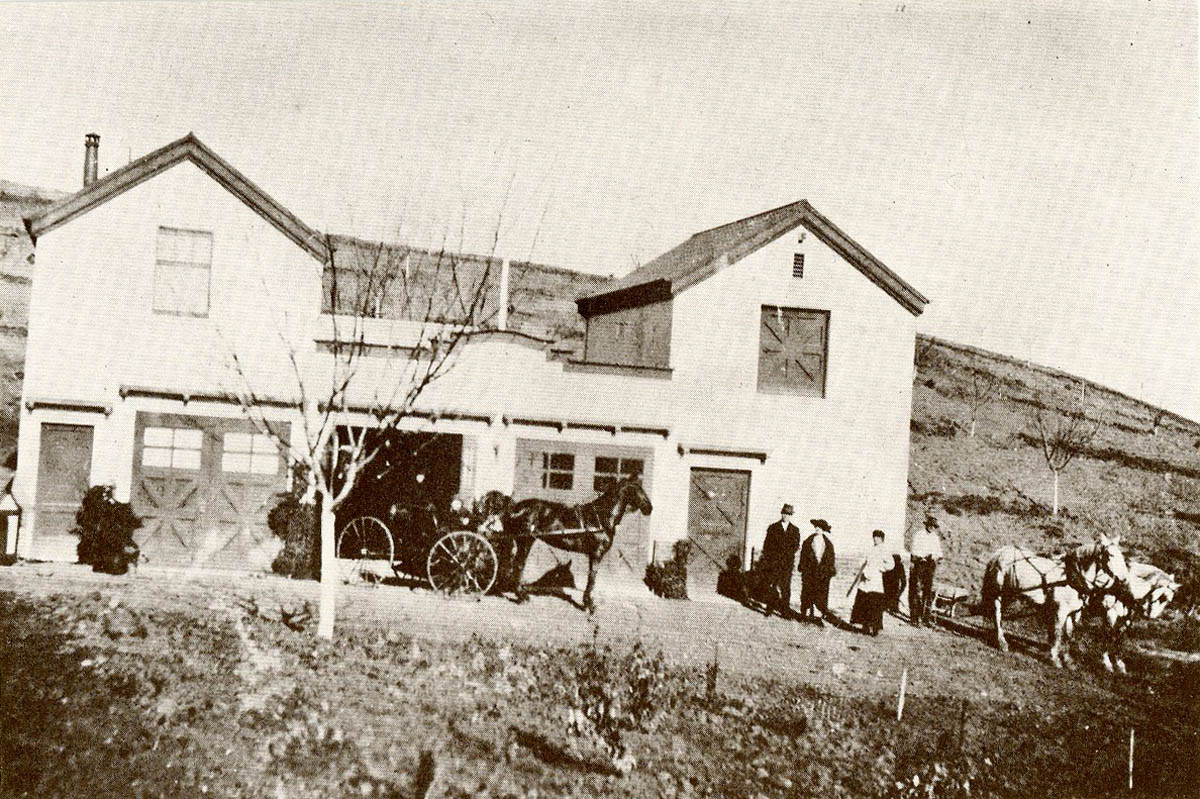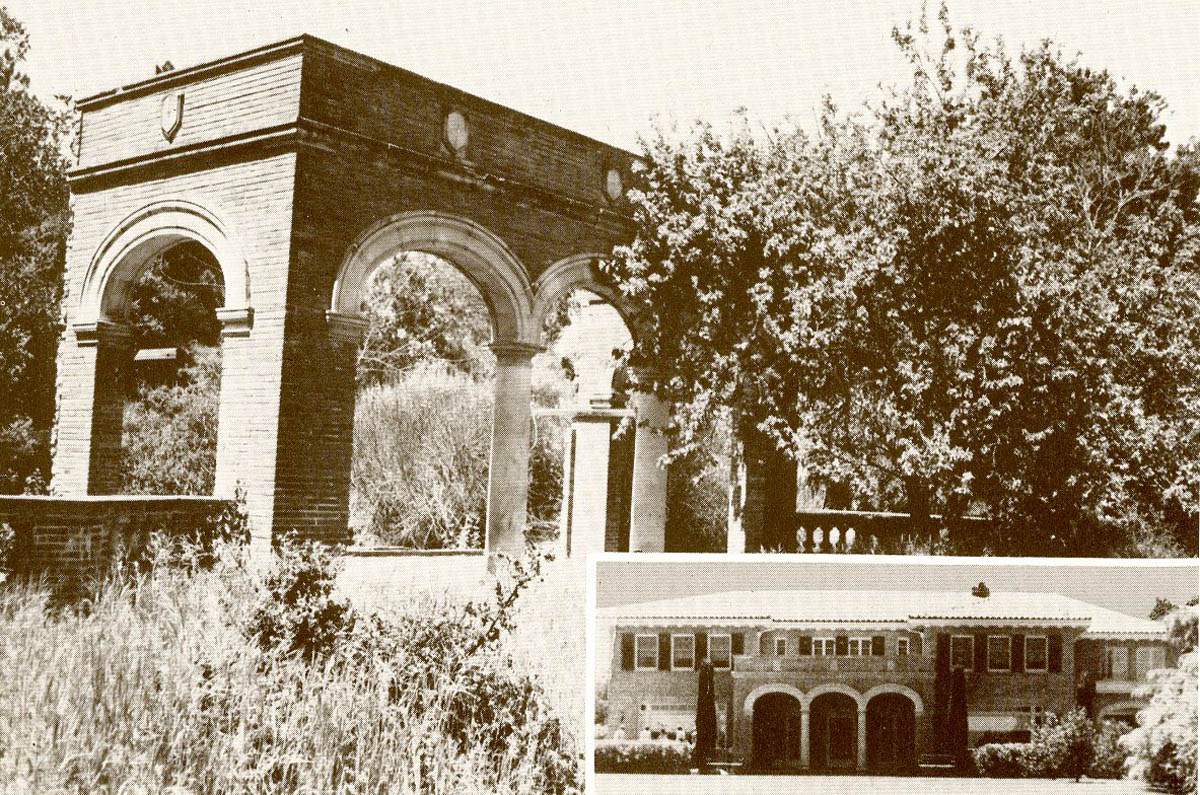On the occasion of the United States Bicentennial, a series of 8 postcards with historic scenes was assembled and made available for sale at a cost of $1.25 per packet of eight. The images are shown below, with the text from the reverse side of the postcard reproduced immediately below each of the images.At the same time, a silver-colored tie-tack with a commemorative design and a lapel button with a similar design were made available - these are shown in the last image.
Front and back of the label which was stapled to the top of the plastic bag containing the eight postcards.
1 Ohlone Village - Los Altos Hills' first inhabitants. Similar village discovered at O'Keefe and El Monte (1971)
2 Japanese Tea Garden - Now part of Foothill Community College Campus (Early 1900's)
3 Aerial of the Hills - Days of Yore. Aerial view of a portion of Los Altos Hills.
3 Annotated version of "Aerial of the Hills" - This shows the previous image with annotations to help orient the image and show its location.
We are looking North over what would eventually become Foothill College. Highway 280 would have gone approximately across the top of this image, we can see the original El Monte passing Stonebrook Drive and becoming Moody Road where it has curved around the campus and Elena is branching off..
4 One Room Purissima School - Built 1901-02, now "Chapel in the Hills". It was an early town council meeting place.
5 Percy Morgan English Manor - Los Altos Hills has its "Castle", a copy of Lantarum Hall, Liverpool, now (i.e. 1976) the Ford Country Day School. (1920)
6 Willard Griffin House - Foothill Community College Campus (1906) Registered State Historical Point of Interest, SCI 035
7 "First" Shumate Building - First building in the Fremont Hills area. Part of the Dr. Thomas E. Shumate Ranch. (1912-1913)
8 The Austin Ruins - Los Altos Hills has its "Ruins". Originally Colonel Austin home (inset) later belonging to P.H. McCarthy. Destroyed by fire in 1929.
Two "pins" also created for the Centenary celebrations, shown at different scales, The tie-tack is silver-colored (chrome-plate?) while the button is of the usual inexpensive "political campaign button" variety.
